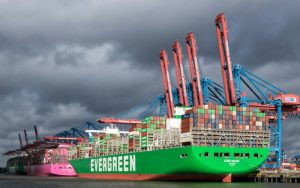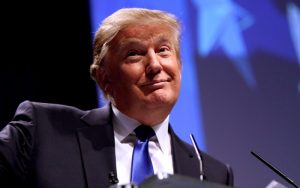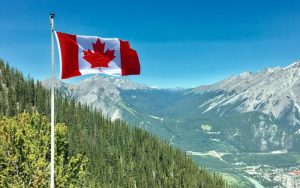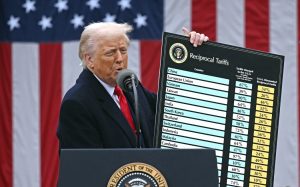
Fears NZ could be swept up as Trump refines scope of trade grievances.
The risk of significant tariff increases on New Zealand’s exports to the United States has risen again after US President Donald Trump opened up a potential new front in his planned global tariff attack.
He has previously threatened “reciprocal” tariffs against countries using trade barriers against US exports.
Exporters and government officials in New Zealand had been counting low tariffs of 1.5% on imports from the US into NZ, versus an average tariff of 3.4% on NZ exports to the US, as a tick in the column for this country’s chances of avoiding reciprocal tariffs.
However, there is cause to reassess that optimism recently after a presidential memo further defined the scope of a study by US government agencies into unfair foreign trade practices due back on the president’s desk by April 1.
As well as tariffs, the impact of non-tariff barriers and value-added taxes are to be scrutinised.
Sense Partners economist John Ballingall said US exporters face minimal non-tariff barriers in NZ compared to other countries.
Non-tariff barriers typically are to guard against bio-security incursions, such as requirements for imported raw pork to be cooked to prevent the spread of porcine reproductive and respiratory syndrome among the local pig population.
These apply to all countries where the disease is present, not just imports from the US.
However, US imports, as with all imports into NZ, cop a value-added tax in the form of the 15% GST.
Ballingall said it is well-established in international trade law that VAT neither distorts trade nor favours local producers over imports.
“VATs apply to all imports and all domestic products and are designed to level the playing field between those – they certainly do not target imports from the US alone.
“The only reason this comes up is because the US does not have a federal-level VAT.
“If that is the basis for the US imposing tariffs – based on a perception of unfairness – again that won’t be targeted at NZ, but we could get caught up with the other 170 countries around the world that have VATs.”
Offering a deal to the deal-loving president could be NZ’s best chance of avoiding being caught by a global tariff, Ballingall said.
One tactic could be to cut tariffs on the 25% of US products entering NZ with a higher tariff than the same product arriving in the US from NZ.
Ballingall estimated the $46 million in lost tariff revenue would be more than offset by avoiding the hundreds of millions of lost earnings NZ exporters could face if they were caught by a US global tariff.
“We should have a range of options ready to go just in case tariffs do come on,” Ballingall said.
You can now read the most important #news on #eDairyNews #Whatsapp channels!!!
🇺🇸 eDairy News INGLÊS: https://whatsapp.com/channel/0029VaKsjzGDTkJyIN6hcP1K

























